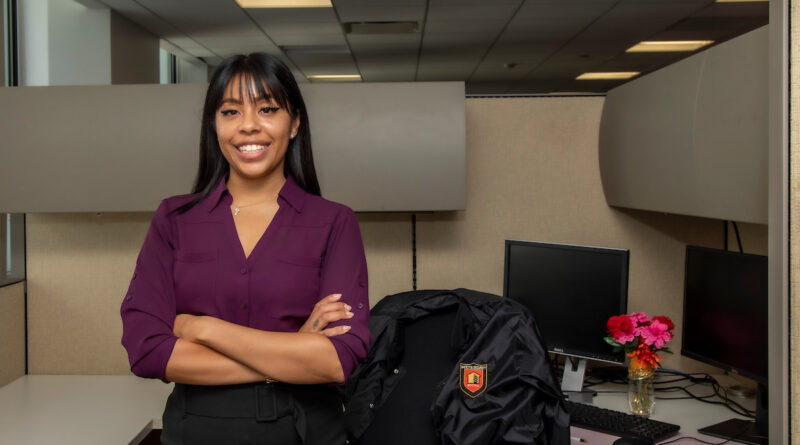Celebrating Native American Heritage Month
NYCHA Employee Elizabeth McCray Shares About Her Hopi Culture
Native American Heritage Month is a time to celebrate the history, contributions, and culture of indigenous people. With more than 574 federally recognized American Indian and Alaska Native tribes, there are many cultures to learn about.
We spoke to NYCHA employee Elizabeth McCray, who was happy to discuss the culture of her Hopi Tribe. Ms. McCray is Hopi and Mexican: her father is from the Hopi Tribe in Arizona and her mother is from Morelos, Mexico. She is a manager in the Office of Safety and Security and has been with NYCHA since 2019.
Where is the Hopi Tribe from? The Hopi Tribe is in Arizona. My grandmother and my grandfather used to live in Arizona in Coconino, where the reservations are. My dad moved to California for work when they were recruiting workers for the railroads.
If you go out to the reservation, you’ll see these high and flat mountains – those are mesas. We have First Mesa, Second Mesa, and Third Mesa, which are kind of like three towns. The mesas have different clans. My dad’s clan is Orayvi, and they’re located in Third Mesa.
Can you share more about Hopi culture, such as food, dress, special customs, and ceremonies? We don’t wear headdresses like other tribes. Our clothing is more of a peasant-type look.
We have foods that are similar to my mom’s Mexican culture, like beans, salsa, cactus, and avocado. While my mom’s culture has tortillas, in the Hopi we have what is called piki bread, which is made out of blue maize. It takes days to make piki bread because first the maize has to be put in water for a day or two before you grind it to make the bread. We eat this bread on special days and for special ceremonies.
Everybody gets their name from friends and family. Twenty days after you’re born, there’s a ceremony with both families where they bring baby gifts and give names for the baby. The parents choose from the names. My first name was chosen this way. And we make piki bread for the ceremony.
We have two types of ceremonies. We have the real ceremonies in the kiva, which means chamber, and only Hopi members are allowed at these ceremonies and prayers. Then we have the plaza ceremonies that are open to the public where they might recreate the snake dance, but it won’t be as specific as they would do in the kiva.
In August they prepare for the December ceremony. The December ceremony is the first for the kachinas, our deities or spirits. We ask for things like better crops, blessings, fertility, and to keep evil away. Kachinas represent nature, our ancestors, and the spirit world and the way we learn about them is through dolls. The only people that can make these dolls are the men in the tribe. Usually, the kachinas come when you do the first ceremony in December and leave in July. In July when we say farewell to the kachina spirits, the men dress up as the spirits. They put on regalia and different clothing to represent the kachinas, and every time they do a dance it’s praying for the kachinas. At that ceremony the men who made the dolls give them to the girls. I was 6 or 7 when I went to my first ceremony, and my dad gave me a kachina that is a black ogre who takes away kids if you don’t behave. I thought it was funny that that’s the one he gave me. I still have it and I want to pass it down.
What do you want people to know about the Hopi Tribe and other indigenous people? I want people to get to know us more, know that we’re just like everyone else, and learn about the culture. I think it’s exciting to see things from a different point of view. People interested in the supernatural might gravitate towards the stories about the kachinas because they are about non-earth beings coming down and teaching us what we know now.
How do you find ways to celebrate your culture far from home? We’re not indigenous to this part of the country but there’s a Hopi Tribe leader in Queens who has gatherings at the Queens Farm. He’ll do a powwow in August and explain a little about our culture.
We can’t go to actual ceremonies because we’re in another state, but we can still follow the tradition. Someone will call us and say they’re going to start the ceremony – and when the ceremony is done, we eat our piki bread.
One of the issues we have in our tribe is that the kids, like me for example, don’t know the language like we should. Our language is similar to Aztec, and I can understand certain things but I can’t speak it. If you can’t speak the language, you’re going to lose part of the culture. I keep saying I’m going to go to my grandmother and learn from her. I want to learn so I can teach my children.







